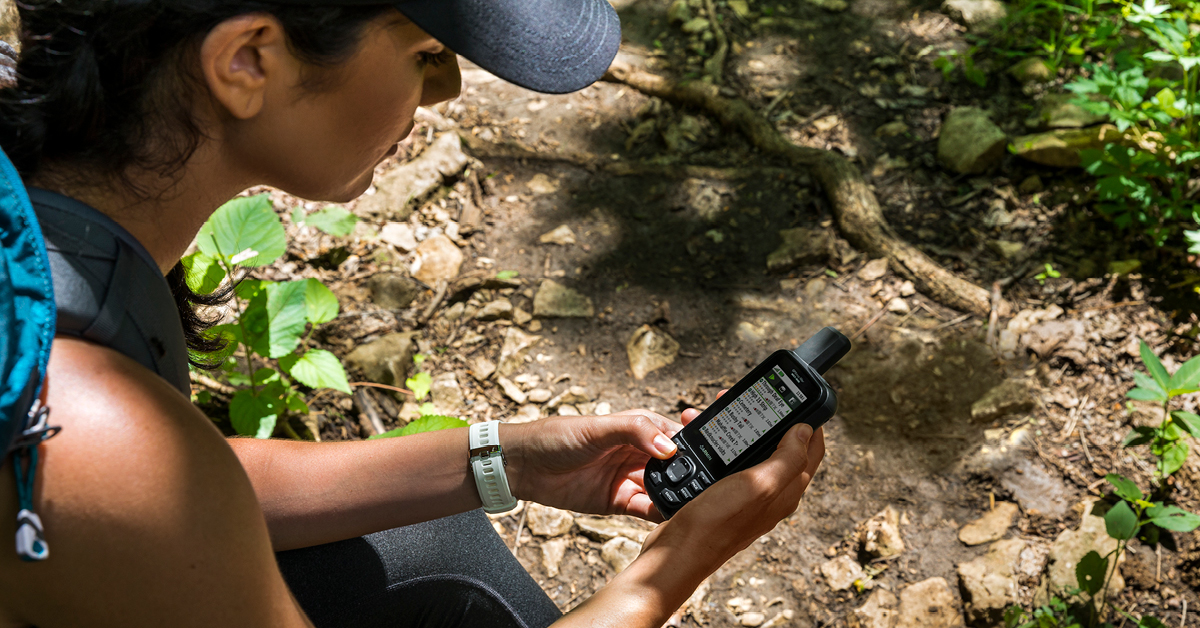How to prevent and treat foot blisters
Outdoor Activities | March 28, 2024
Win a trip to Crete by becoming an Explore + member
SAIL
September 20, 2021

Finding your way isn’t only about having a GPS in the woods, but rather the right GPS that will help you avoid unnecessary detours and delays. Here are some tips for choosing the right one according to your needs.
You don’t have to buy the most expensive GPS to find your way in the mountains, along a lake or on a remote bike trail. It depends on your needs and the type of activity you want to do. Browse through our article to learn more.
Basically, the term GPS stands for Global Positioning System, a worldwide satellite navigation system that allows you to know your location, speed and time.
A GPS device is very useful, particularly in the great outdoors, as it guides you from point A to B, showing you the direction and distance to your destination even when you’re out of range of a cellular network. Many devices even allow you to record your route and access detailed downloadable maps of trails you want to visit.
Note that brands like Spot use GPS technology in their satellite messaging devices so you can report an emergency or communicate with contacts if you are out of network range.
GPS apps for your phone and ones designed for your car are good for helping you find your way if you’re lost, but nothing compares to a good outdoor GPS when you’re looking at navigating the woods. They also have the added advantage of recharging more easily out in the open air – a simple battery switch or a bit of natural light (for solar models) is all you really need.
They will also allow you to enter landmarks or places where you may decide to camp, drop off your bag, or even fill up your water bottle, so that you can get back on track quickly and more easily.
Depending on the activity you do, various models offer different, specific features to help guide you.
While hiking, you’ll be happy that your GPS map displays not only the hiking trails, but also swamps, streams, and rivers you may need to cross – or avoid if going off-trail isn’t allowed. As an added plus, it’ll give precise and clear information about the slope of the trails you’re on (flat, rugged, impossible to cross without climbing, etc.) in order to help you judge the level of energy and the approximate time it will take you on a given path.
Contrary to the classic compass, an electronic compass integrated in your GPS will indicate in which direction North is, no matter your position. Another practical integrated feature? A barometric altimeter, which will track atmospheric pressure variations based on both altitude and climate conditions.
In addition to providing bike paths or suggesting faster or less-crowded routes, the bike GPS usually comes with a fastening set to attach to the handlebars and is waterproof to protect against downpours.
Some models can also track your performance by calculating speed and distance travelled. It is sometimes also possible to download your itinerary, and share it with your friends or on social media to compare with others who have the same GPS for some friendly competition and stat sharing.
When it comes to a geocaching GPS, they will often have the advantage of being able to enter a description of the cache as well as comments from geocachers, along with having an integrated camera, significant internal memory, and extremely precise map software to help users find the hidden object.
Since finding your way isn’t solely about how good your GPS is, here’s an article about finding your way in the woods. Read about the importance of having some books, maps, and atlases on hand, as well as other tools, such as binoculars.
Shop – Atlases Shop – Binoculars
To learn how to navigate without a GPS (in case of a break, loss, or simply for the challenge), you can always get away with a simple compass (or strong knowledge of the stars), a small knife, rope and a multipurpose knife (to mark your path, for instance).
Shop – Compasses Shop – Knives
Reading a compass is easy – you’ve got to find North. How? Use a map, or the position of the sun (rises in the East, sets in the West) or the stars (especially the North Star, which indicated true north).
Once you’ve found North, face it and make sure there are no metal surfaces in close proximity. Then, you can find the other cardinal points and follow to get to where you’d like to go.